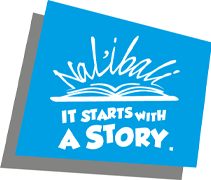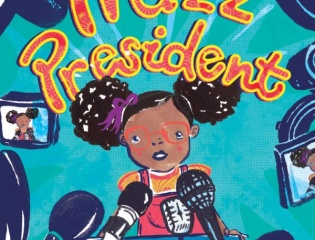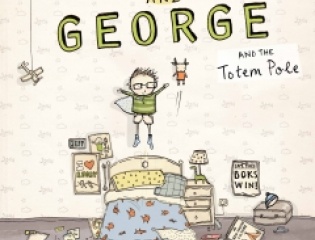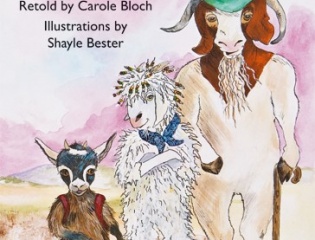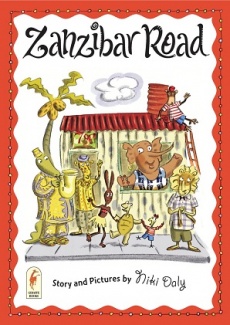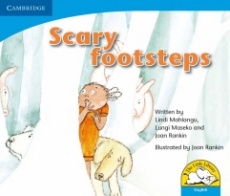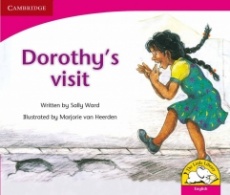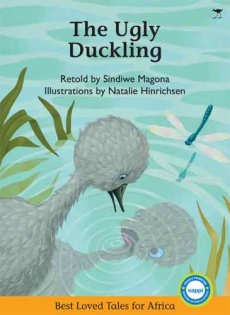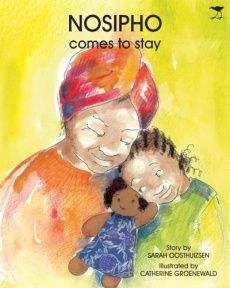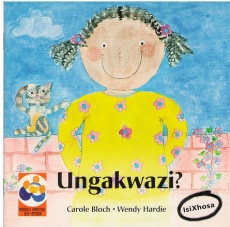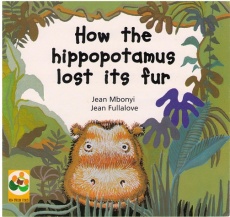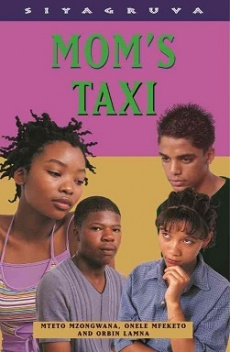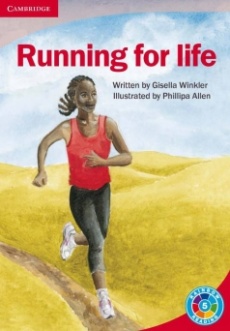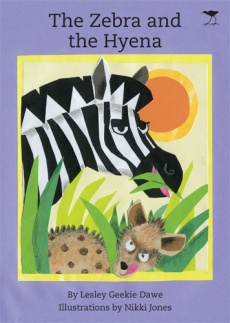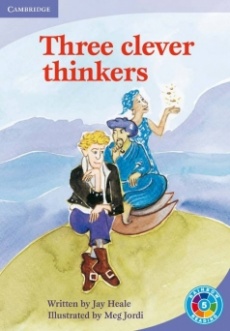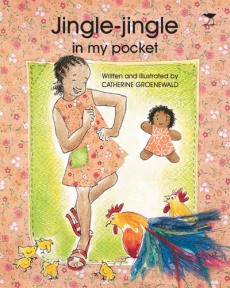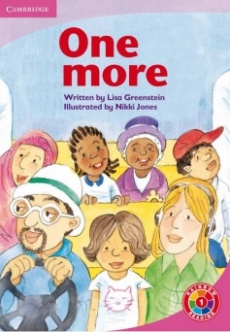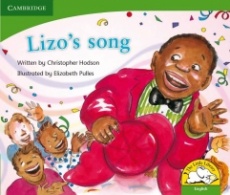With a heart as big as Africa, Mama Jumbo arrives on Zanzibar Road ready to build a house, make new friends and settle down. In five hilarious chapters, Niki Daly introduces a colourful and entertaining cast of characters who will delight children of all ages. Welcome to Zanzibar Road! Niki Daly’s high regard for children is always beautifully expressed through the books he creates for them. He has won numerous awards at home and abroad for his lyrical writing and gently humorous illustrations.
Featured books


Zanzibar Road
Smart kids - I am four
A full-colour activity book designed to develop key skills for four-year-olds while they do activities they will enjoy and interact with the loveable Smart-Kids characters. Detailed notes support parents.
Target market: 4 year olds and their caregivers
- Includes early Numeracy, Literacy and Life Skills activities.
- Includes detailed notes and tips for parents. The notes explain the purpose of activities and give parents ideas for extending the activities.
- Full colour activity book with beautiful illustrations and photographs and 60 removable stickers.
- Children will love interacting with the loveable Smart-Kids characters.
A good plan
A group of friends huddle together and come up with a good plan. Each friend has a job to do but the result isn't quite what they had hoped for. So they make a new plan which is thought through more carefully and end up with a special play place in the end. The main Mathematics theme in this story is that of measurement. Also included are elements of planning strategy, group work and data handling.
Scary footsteps
Lindi's papa warned her not to take the path into the forest because a scary monster may live there. This story deals with size and growth and compounding of numbers. It also reinforces counting, encourages sequencing, promotes figure ground perception and making patterns out of rhythm and rhyme.
Dorothy's visit
Farida receives a postcard from her uncle. He is sending a friend to visit her. She wonders who the friend might be and what they can do together. Will Farida be happy to meet her? The main concepts that are carried throughout the telling and teaching of the story include greetings and identifying similarities and differences. Additional concepts include looking at presumptions, verbs and games at school. The story can be used as a starting point to discuss greetings (such as how one greets another at different times of the day) and look at formal and informal greetings. The learners can include greetings in their home language. One can also look at similarities and differences between people, languages and classrooms.
The Ugly Duckling
The poor ugly duckling looks very different from the other ducklings. His duck family tease him and make him feel unwanted even though he simply wants to be loved and belong. So he runs away and sets off on a long and lonely journey. Will he ever be loved and accepted for who he is?
Crocodile's sore tooth
Crocodile has a sore tooth. The wild animals offer him advice. Bird is able to help him get rid of his toothache, but what must crocodile promise? The main concepts that are carried throughout the telling and teaching of the story include wild animals and their eating habits. Additional concepts are keeping promises, bravery and dental care. The story can be used as a starting point to discuss when it is important to keep a promise (for example: you promised your friend that you would play with him or her at break time) and when it is okay to break a promise (for example: stranger or danger). You can also discuss healthy eating habits and looking after teeth.
Nosipho comes to stay
Thandi’s parents have died of AIDS, and she must go to live with her Gogo. Memories of her family are woven throughout the making of a special doll – a doll made from “a few oddly shaped rags”, but who shows Thandi how to find comfort and hope.
Can you?
Can you? is a brightly illustrated, playful and joyful little book that will make readers of all ages smile. Its clever use of repetition and humour as well as its focus on the familiar will get young children moving and reading!
How the hippopotamus lost its fur
Long, long ago, when Hippopotamus and Fire were friends, they would often play together. One day, Fire visited Hippopotamus at his home and Hippopotamus learnt a very valuable lesson about playing with Fire
Mom's Taxi
When a girl calls Brunette a 'coconut' the Siyagruvers suddently notice the differences between life in the suburbs and life in the townships or on the Cape Flats. They have to do something about it - but what? And, hey, how come Shelley's mom (of all people) is riding around the townships as if it's her turf?
Running for life
Based on a true story, this tells the tale of Thembi, an HIV-positive woman training to run the Comrades Marathon. She wants to run the marathon before she dies. The story explores her training programme and how she felt while training.
The Zebra and the Hyena
This is the story of how quick-thinking Zebra tricks the hungry Hyena into not eating him for dinner, with very prickly results. A delightful tale with striking paper collage illustrations.
The Colour of Love
Life in the bush can be very lonely, even for Leon, the proud young lion king, but he quickly learns that goodness and kindness can earn you a friend for life.
Hic... hic... hiccups!
Baby has hiccups. The family members try different ways of getting rid of the hiccups. Who is able to find a cure? The main concepts that are carried throughout the telling and teaching of the story include family members and action words (verbs). Additional concepts include problem solving. The story can be used as a starting point to discuss how family members work together to solve problems.
Number one washerwoman - from Three Clever Thinkers
Number one washerwoman is a West African legend about a washerwoman who becomes the richest woman in her village. She cleverly takes advantage of the chief's wish to reward all his people.
Jingle-jingle in my pocket
Thandi needs new shoes and she knows they are going to cost a lot of money for her Gogo. So, together they work out a plan to get the money with a little help from Nosipho, her doll and Pepi, her pet rooster.
One more
A girl and her grandmother are sitting in a taxi. As they wait, more and more people get into the taxi. When it is full the taxi guard shouts for the driver to go. Level: Level 1 Red Box B Theme: Counting Type: Read alone Rainbow Reading is a graded reading series for primary schools. It provides a wealth of original stories and factual texts, which will help learners to develop the reading skills and vocabulary they need to meet the requirements of the curriculum — in all learning areas. The Rainbow Reading series consists of 350 titles graded in 7 levels. Within each level, titles are grouped around themes which are drawn from the outcomes of the learning areas of the Foundation and Intermediate phases of the curriculum. The books in the series are all original works by writers from Southern Africa, and contain beautiful artwork by South African artists as well as exciting photography. Comic books, plays, poetry, short stories and biographies are also featured within this fresh, contemporary series. The series is suitable for English First Additional Language learners, as well as English mother-tongue learners.
Lizo's song
Lizo is a young, homeless boy who lives on the streets of Cape Town. He has no family and no money and he sings to passers-by on street corners and outside businesses in the hope of earning some money. One day, a member of a carnival band hears Lizo singing and invites him to join the band. Lizo finally finds a place where he belongs.
Mama Mabena's magic
Two young Ndebele girls think that Mama Mabena has magic hands, because she can make beautiful patterns on the walls of her home. Then Mama Mabena shows them how they can make magic with their own hands. Colour and shape are the background to this story. Figure and ground perception and spatial concepts can also be taught.
